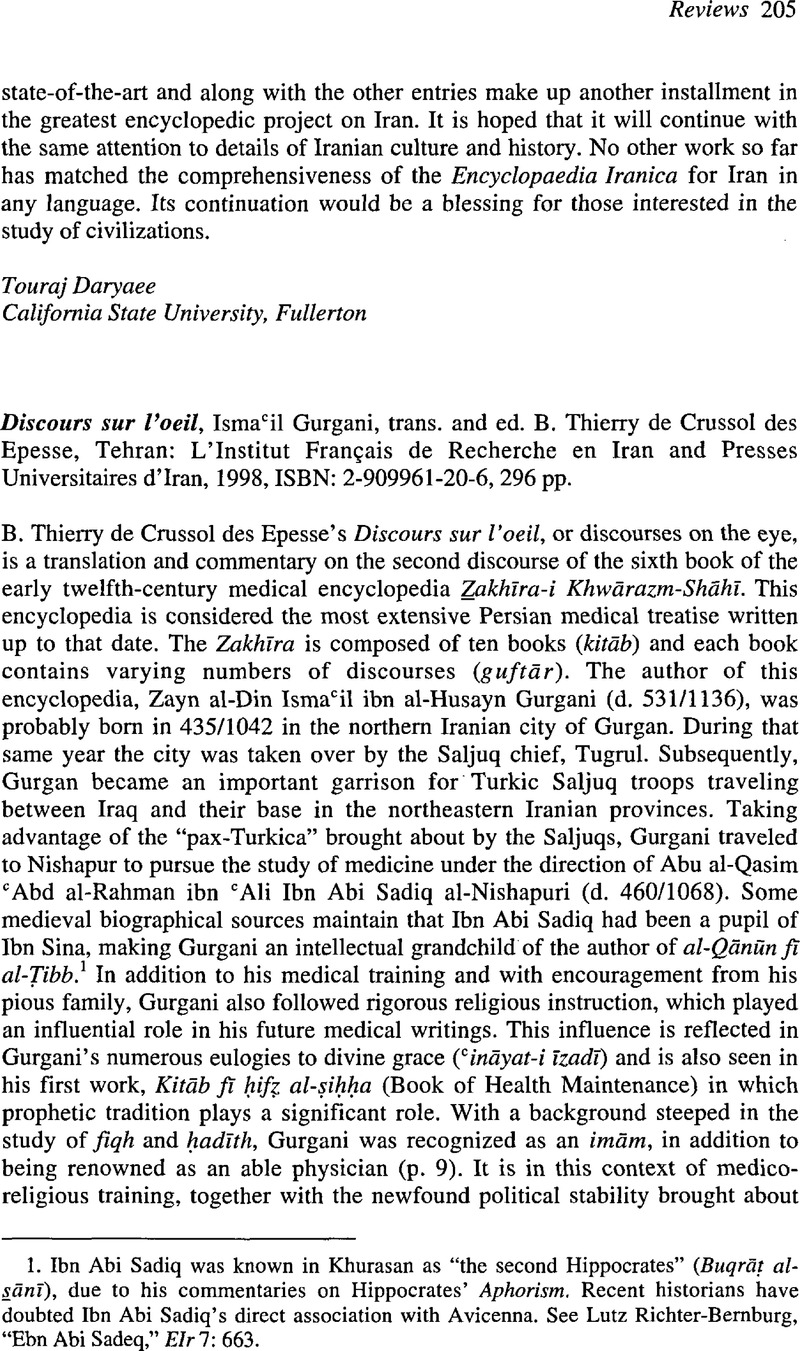No CrossRef data available.
Article contents
Discours sur l'oeil, Ismaᶜil Gurgani, trans, and ed. B. Thierry de Crussol des Epesse, Tehran: L'Institut Français de Recherche en Iran and Presses Universitaires d'Iran, 1998, ISBN: 2–909961–20–6, 296 pp.
Published online by Cambridge University Press: 01 January 2022
Abstract

- Type
- Reviews
- Information
- Copyright
- Copyright © Association For Iranian Studies, Inc 2002
References
1. Ibn Abi Sadiq was known in Khurasan as “the second Hippocrates” (Buqrāṭ al-![]() ānī), due to his commentaries on Hippocrates’ Aphorism. Recent historians have doubted Ibn Abi Sadiq's direct association with Avicenna. See Richter-Bernburg, Lutz, “Ebn Abi Sadeq,” EIr 7: 663.Google Scholar
ānī), due to his commentaries on Hippocrates’ Aphorism. Recent historians have doubted Ibn Abi Sadiq's direct association with Avicenna. See Richter-Bernburg, Lutz, “Ebn Abi Sadeq,” EIr 7: 663.Google Scholar
2. Depois, J., “![]() urdjānī, Ismaᶜīl,” EI (2nd ed.) 2: 603Google Scholar; and Ali Akbar Sa'idi Sirjani, “Ḏakīra-ye Kvārazmšāhī,” EIr 6: 609.Google Scholar
urdjānī, Ismaᶜīl,” EI (2nd ed.) 2: 603Google Scholar; and Ali Akbar Sa'idi Sirjani, “Ḏakīra-ye Kvārazmšāhī,” EIr 6: 609.Google Scholar
3. See Frye, R. N., ed., The Cambridge History of Iran (Cambridge, 1975), 4: 606CrossRefGoogle Scholar, on the emergence of the New Persian language following the Arab conquest of Iran.
4. Boyle, J. A. ed., The Cambridge History of Iran (Cambridge, 1968), 5: 550.CrossRefGoogle Scholar


